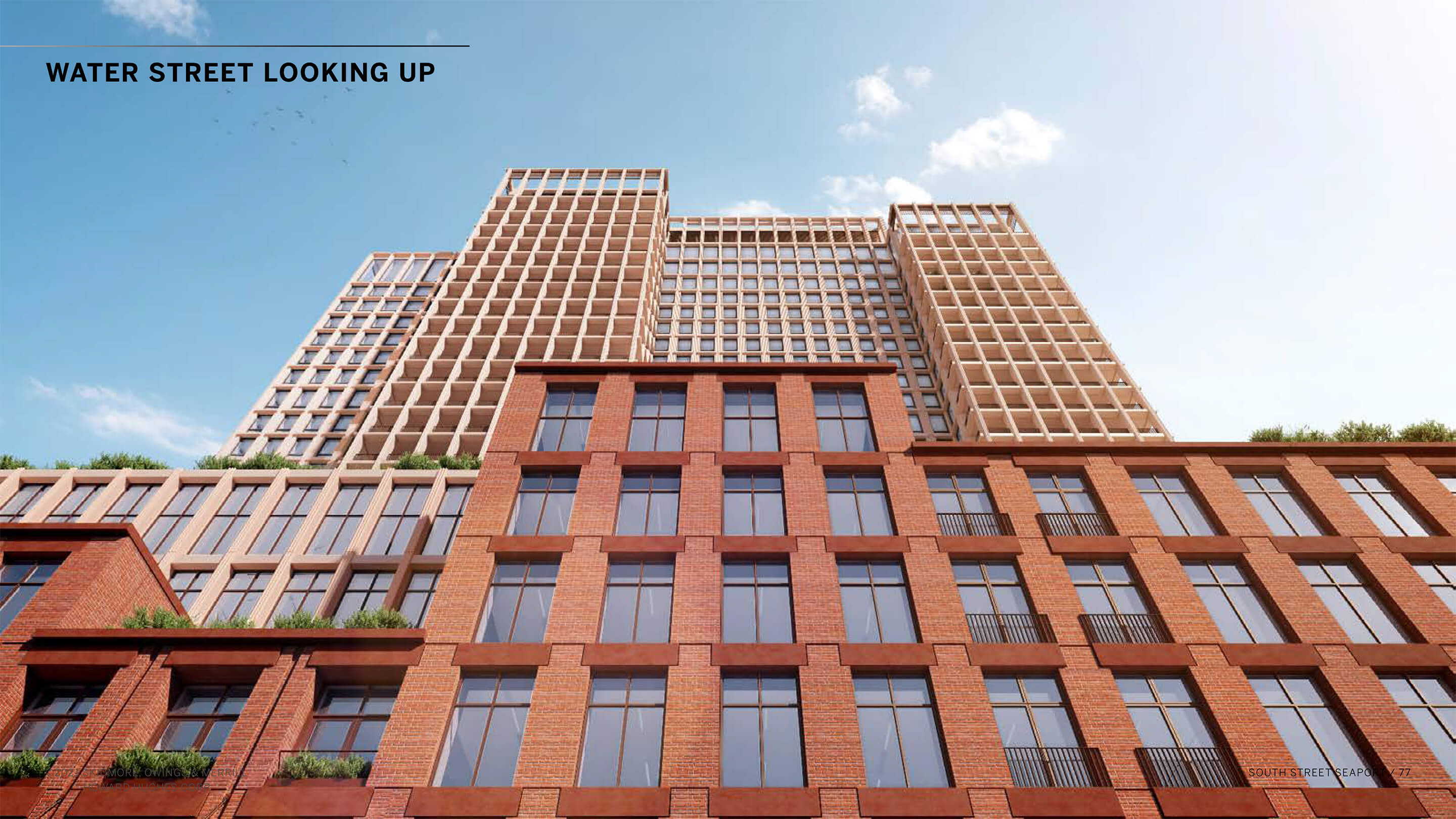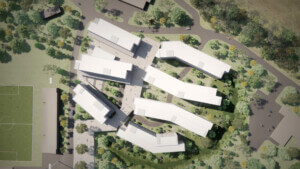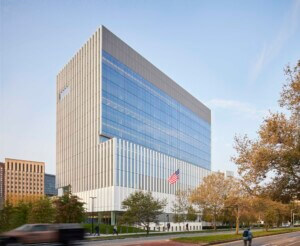Opponents of the Howard Hughes Corporation’s plans to build a mixed-use tower at 250 Water Street in Lower Manhattan made their voices heard during a grueling six-hour-long Landmarks Preservation Commission (LPC) hearing yesterday, April 6, even as SOM presented a cut-down version of the project. Still, the revised design seemed to win over some of the project’s former critics.
Three months ago, the team went before the LPC to present a dual-pronged tower-on-a-base scheme, with the taller topping out at 470 feet tall and 360 units of housing between the two sections (with 100 set aside as affordable). The site, currently a parking lot at the edge of the historic Seaport Historic District, is capped at 120-feet-tall, requiring an air rights transfer from the neighboring South Street Seaport Museum. In exchange, the endangered museum would receive $50 million to help shore up its future, including possibly using some of that money to build a copper-clad, SOM-designed annex.

In the months since, there has been plenty of ink spilled in favor of the development by proponents of affordable housing who point out Community District 1 is sorely lacking in affordable options, and by opponents, who have argued affordable housing isn’t in the LPC’s mandate and that the tower is grossly out of scale for a historic neighborhood. Additionally, in testimony submitted to the LPC the last time the project came up for approval, the City Club of New York argued that the survival of the Seaport Museum shouldn’t be linked to the approval of 250 Water Street and is outside the scope of consideration.
Howard Hughes and SOM took that feedback to heart and returned with a shorter, squatter tower massing set even further back on the podium to unclutter views of the street. The two-tower typology was changed to a solid, filled-in massing that now caps out at 345 feet; the entire project has been downsized from 757,000 square feet to 550,000. Accordingly, the number of housing units has also gone down from 360 to 270 (shrinking the affordable housing component to 70). Cornices were also added along the roofline of the podium.

Still, that wasn’t enough to soothe the most vocal of opponents yesterday, even as city officials were on hand to stump for the project. Ultimately, however, those present outnumbered those against by 79-to-54.
Margaret Chin, who represents District 1 on the City Council, went before the LPC to argue that the endowment to the Seaport Museum was necessary to ensure the survival of an institution synonymous with the historic district.
Manhattan Borough President Gale Brewer, who has typically come out against tall tower construction in historic and low-rise districts in the past, has been a surprising proponent of the complex at 250 Water St. On April 6, Brewer told the LPC that developing non-contributing sites was vital, and complimented the way the design for the museum at 89 South Street blended new elements with the historic structure. She also singled out the reduced bulk and height of 250 Water St.’s podium along Water Street, and the “historic materiality” of the brick and patterning chosen for the facade. Brewer ultimately thanked the design team for revising the project according to community feedback and gave the project her blessing.

However, the new design didn’t seem to assuage all complaints, and preservationists, city nonprofits, and nearby Southbridge co-op residents were on hand to contest the new design. Yuh-Line Niou, who represents the district in the New York State Assembly, said that she couldn’t support the project as it still exceeded the 120-foot height limit, calling SOM’s shifting of 250 Water St.’s bulk a “sleight of hand” that was still grossly out of scale. Niou also pointed out that Howard Hughes had never proposed a tower that conformed with the district’s current height limits, arguing that they had gone big from the start.
The City Club of New York, unsurprisingly, was still against the new massing, as were the Friends of South Street Seaport, Historic Districts Council, Municipal Art Society of NY, Lower East Side Preservation Initiative, and others. However, in a major move, the New York Landmarks Conservancy changed its position and ultimately endorsed the project (see above for their previous op-ed where the group came out against it). In their testimony yesterday, the Conservancy lauded the design team for addressing their previous concerns and reducing the bulk and height of the project.

Ultimately, the LPC declined to take action and is expected to issue its decision sometime in the next few weeks. According to The Real Deal, Howard Hughes has stated that if the LPC turns down their application for 250 Water Street, they’ll move ahead with plans to build a 160-foot-tall tower at the site without any affordable housing. Although the district caps developments at 120 feet, a 40-foot variance for flood-prone areas would allow the developers to build higher. In the meantime, a Howards Hughes spokesperson told AN that “We are evaluating potential modifications in response to the Commission’s comments.”
They continued, adding:
“We’ve worked hard on a redesign of 250 Water Street that’s appropriate and responds directly to the Landmarks Preservation Commission’s comments about the building’s size and contextuality. We were able to do all of this while also preserving two of the project’s crucial elements: deeply affordable housing in one of the city’s wealthiest neighborhoods and meaningful funding for the South Street Seaport Museum, which is the heart of the Historic District and reason for its existence. As the neighborhood and the city focus on post-pandemic recovery, we have a unique opportunity to transform a parking lot with no historic value into a nearly billion-dollar investment that supports the long-term viability of the Museum and creates Lower Manhattan’s most significant affordable housing in decades. We appreciate the Commission’s thoughtful consideration, along with the broad support we received yesterday from an array of community members, preservationists, elected officials, architects, local business owners and many more who believe the Seaport’s best days are ahead of us, and that this project will play a vital role in its recovery.”
The full 10-hour LPC meeting can be watched here.











